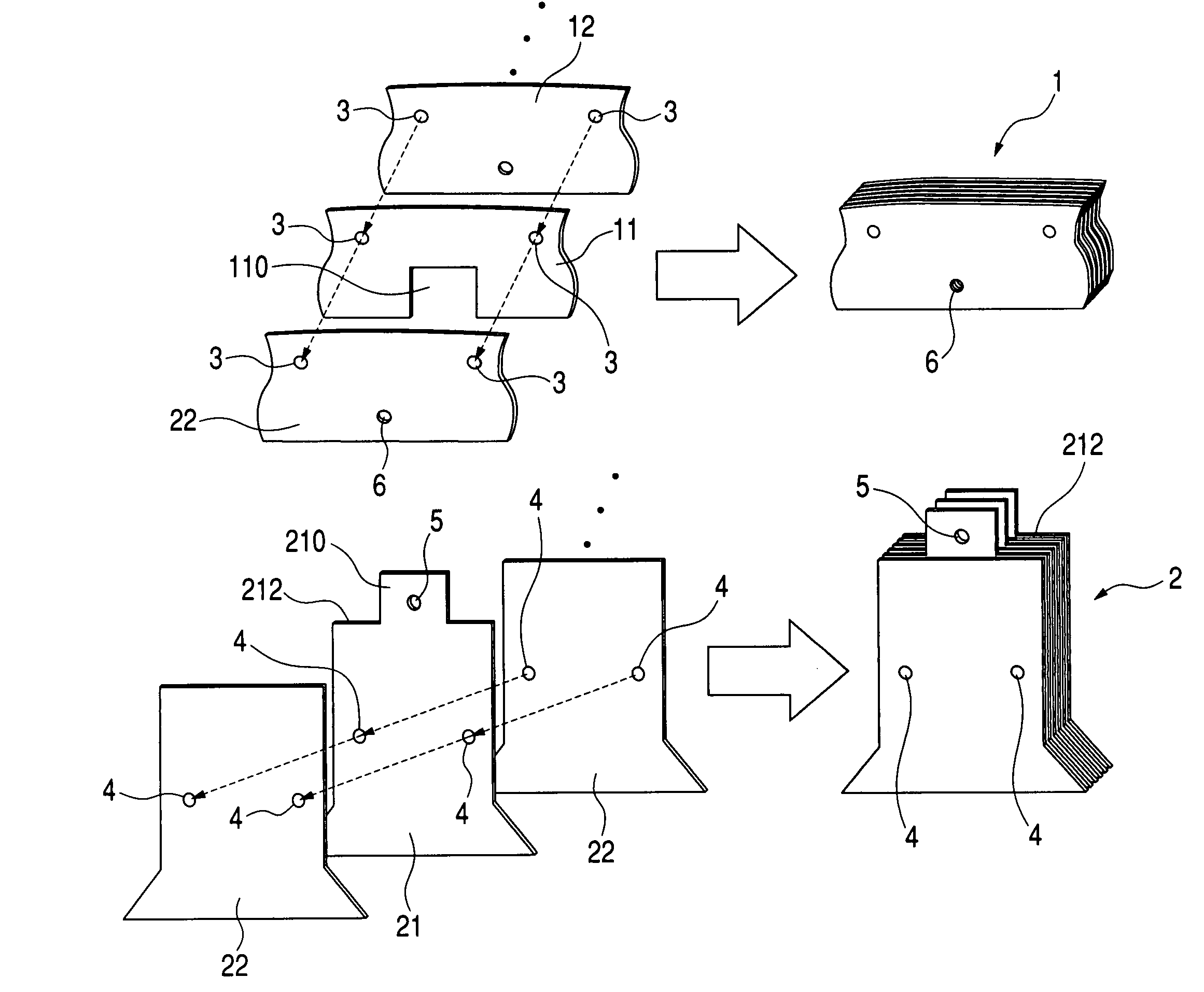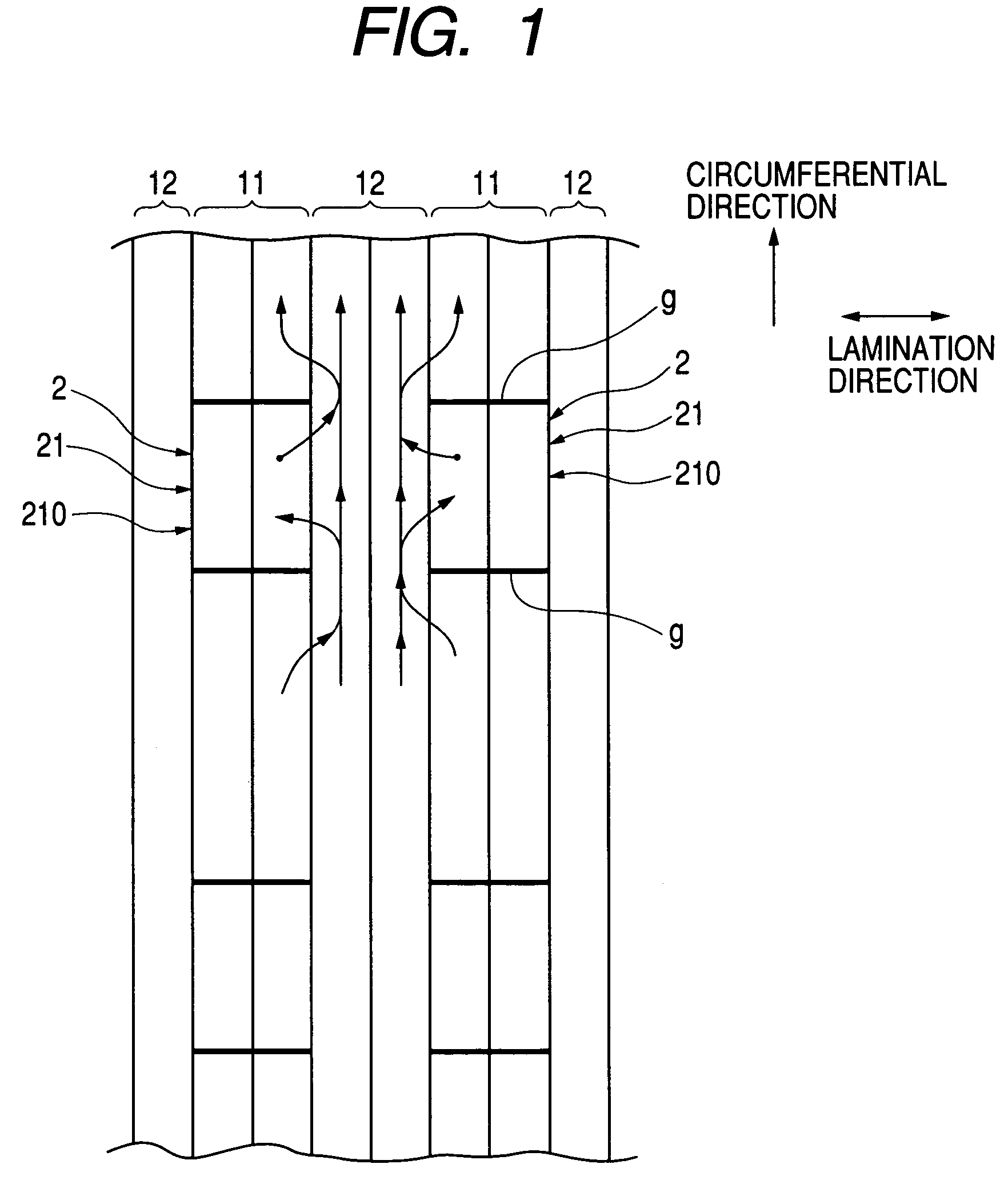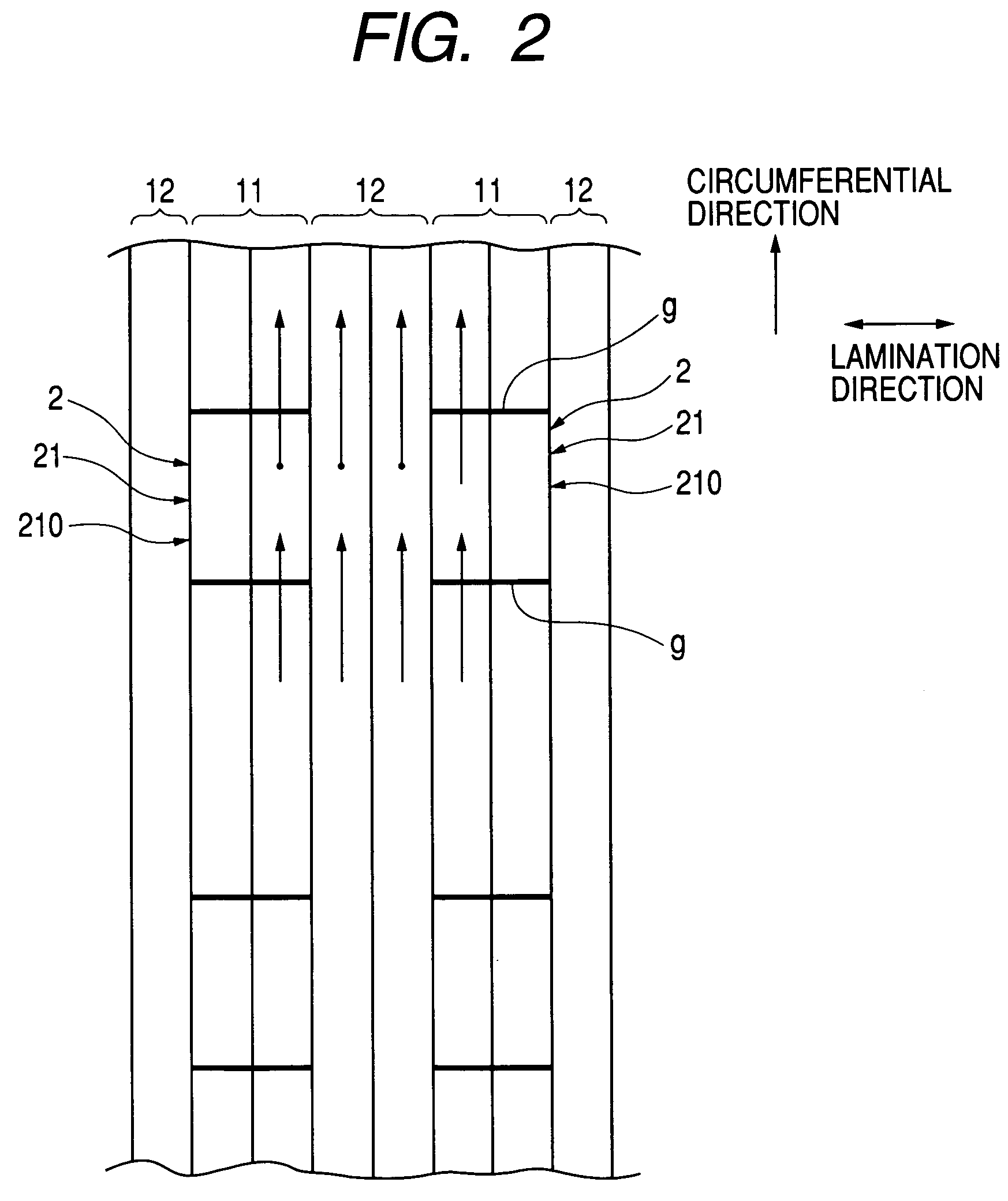Combined stator core for an electric rotary machine
a stator core and electric rotary machine technology, applied in the direction of dynamo-electric machines, electrical apparatus, magnetic circuit shape/form/construction, etc., can solve the problems of reducing the mechanical connection strength of the teeth block, and reducing the number of coupling pairs.
- Summary
- Abstract
- Description
- Claims
- Application Information
AI Technical Summary
Benefits of technology
Problems solved by technology
Method used
Image
Examples
first embodiment
[0067]A combined stator core according to a first embodiment of the present invention will be explained hereinafter with reference to FIGS. 5 and 6. A combined stator core includes a cylindrical yoke 1 and a plurality of teeth block 2 coupled or fitted into an inner cylindrical surface of the yoke 1 at predetermined pitches in the circumferential direction. FIG. 5 is a partial perspective view showing a part of the yoke 1 and a single teeth block 2. FIG. 6 is a partial cross-sectional view showing the yoke 1 and the teeth block 2 shown in FIG. 5, taken along the axial direction (i.e., lamination direction).
[0068]The yoke 1 includes first annular plates 11 and second annular plates 12 which are alternately laminated so as to form a multilayered body. Each of the first annular plates 11 and the second annular plates 12 is made of a single disk-like electromagnetic steel plate. The teeth block 2 includes first teeth 21 and second teeth 22 which are alternately laminated so as to form a...
second embodiment
[0078]According to the above-described first embodiment, respective teeth blocks 2 are separated from each other. However, as shown in FIG. 13, it is possible to connect two or more same teeth (i.e., first teeth 21 or second teeth 22) with an overhanging flange 25 of the teeth block 2 protruding from the inner radial ends of the teeth block 2 in the circumferential direction so as to narrow the slot. It is preferable that, as shown in FIG. 14, the overhanging flange 25 has a narrowed portion 25′ in the center of the circumferential direction where the radial width of the flange 25 is narrowed to reduce the leakage of the magnetic flux. Furthermore, as shown in FIGS. 15 and 16, it is preferable to connect a pair of the first tooth 21 and the second tooth 22 or more. Furthermore, it is preferable as shown in FIGS. 17 and 18 that the combination of a single second tooth 22 and two (or more) consecutive first teeth 21 is used to constitute the teeth block 2. FIG. 18 is a view showing th...
third embodiment
[0079]FIG. 19 is a view showing another embodiment of the present invention. According to this embodiment, each of the recessed portion 110 and the protruding portion 210 has a circumferential width decreasing continuously toward the outer radial direction. This arrangement effectively prevents the protruding portion 210 from being obstructed by the sharp edges of the recessed portion 110 when the protruding portion 210 is first inserted into the recessed portion 110. It is also preferable that the second annular plate 12 has a small recessed portion and the first tooth 21 has a small protruding portion being coupled or fitted into the small recessed portion of the second annular plate 12.
Modified Embodiment
[0080]The first annular plates 11, the second annular plates 12, the first teeth 21, and the second teeth 22 are constituted by one or a plurality of electromagnetic steel plates.
PUM
 Login to View More
Login to View More Abstract
Description
Claims
Application Information
 Login to View More
Login to View More - R&D
- Intellectual Property
- Life Sciences
- Materials
- Tech Scout
- Unparalleled Data Quality
- Higher Quality Content
- 60% Fewer Hallucinations
Browse by: Latest US Patents, China's latest patents, Technical Efficacy Thesaurus, Application Domain, Technology Topic, Popular Technical Reports.
© 2025 PatSnap. All rights reserved.Legal|Privacy policy|Modern Slavery Act Transparency Statement|Sitemap|About US| Contact US: help@patsnap.com



